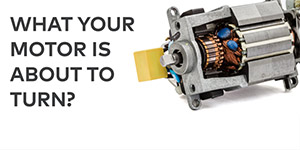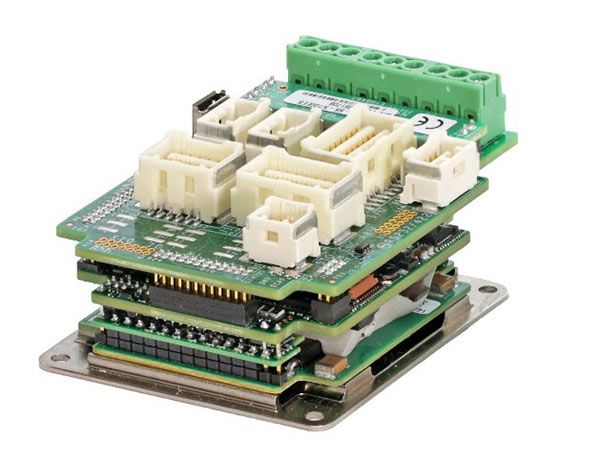How to choose the Ideal Servo Drive for your Machine?
Part 1:
Introduction
Servo motor and stepper motor drives provide significant potential for optimizing motion control systems. Smart drives range from simple “dumb” drives that only translate and amplify controller commands to more sophisticated drives that can act independently as controllers. System designers have a choice of power, voltage, current, form factor, and connectivity. Other, more advanced options include autotuning, troubleshooting capabilities, data recording, and safety functionality. While engineers may feel overwhelmed with choices, a strategic analysis process allows them to choose the best device for their application.
When selecting a drive, it can be tempting to look at the motor’s datasheet and pick up the phone. However, there is much more involved in selecting a motor than just finding one that makes it turn. Other factors to consider include application-level and system-level characteristics.
Consider the big picture. What are you trying to move? How carefully and quickly do you need to move it? There are significant differences between transporting detergent boxes on a conveyor and positioning sample cartridges in a blood-gas analyzer, for example. How complex is your system? Are you trying to drive a single axis or multiple axes of highly coordinated motion? Are you building a battery-powered AGV for which size, weight, and efficiency are the most critical considerations, or are you building a surgical robot, where performance is crucial?
Choosing a drive
Basic motion
Let’s consider a basic motion system for our discussion. This consists of a controller, a drive, a motor, and one or more feedback devices. The controller sends the motion command to the drive, which converts it into a pulse-width modulation (PWM) output signal for the motor. That signal causes the motor to turn (or translate, in the case of a linear motor). Motor torque is proportional to drive current, while motor speed and direction are proportional to voltage. Feedback makes it possible to close one or more control loops (torque, velocity, or position) with the controller or drive to move the load as required.
Analog or digital?
One of the primary drive classifications is analog versus digital. Although digital drives provide important benefits and have come to dominate sales in the last decade or so, analog drives still have roles to play.
Analog drives
Analog drives contain purely analog circuitry. Levels of sophistication may vary. Most analog drives can take a controller input in the form of a ±10 V signal. The drive accepts the voltage command from the controller, amplifies it, and converts it to an appropriate trajectory command for the motor (which is why drives are sometimes called amplifiers). Typically, positive voltage drives the motor forward while negative voltage reverses it; this response can easily be reversed in software, of course. Alternatively, some analog drives can also take the controller input as a PWM signal or a sinusoidal signal.
Analog drives can drive both brush and brushless motors. They are economical, compact, and consume minimal power. Because analog drives don’t include processors, they are very robust and don’t require programming. They can be connected using twisted-pair wiring. In simple and cost-sensitive applications like an automated forklift’s traction wheel, servo motors with analog drives may be a very good choice.
Because analog drives don’t include processors, they don’t introduce latency. The lack of processing capabilities cuts both ways, however. Analog drives require external controller commands. The devices must be manually calibrated using potentiometers. This is straightforward for a single axis or simple system but in some cases tuning an axis can take hours for a skilled engineer. Drives that require manual tuning have another problem. They can’t respond to changing loads. Due to these drawbacks, analog drives are increasingly being replaced by digital drives, both in new systems and in older machines.
Digital drives
Digital drives incorporate processors and onboard memory, enabling significantly higher functionality. Digital drives support remote or even automated modification of the amplitude and duty cycle. The drives operate at frequencies of several hundred hertz, which makes them much more responsive than analog versions. Due to their digital nature, they can be tuned via software. This opens up the opportunity for autotuning, which not only speeds up commissioning but can be used to enable axes to respond to dynamic changes in load inertia in real-time, for example, to prevent sloshing or other types of load oscillation.
As with analog drives, digital drives exist with varying levels of sophistication, ranging from built-in connectivity to functional safety features and even control capabilities. The key point to remember is that digital drives offer more flexibility than their analog cousins.
Some digital drives also include analog ports. Digital drives with analog capabilities can simplify the migration from analog to digital on an existing machine. If the original analog drive fails, a dual-use drive can be installed and operated as an analog component. When it’s time to switch out the controller and convert the machine to digital operation, switching the drive to digital would just require changing out the wiring and updating certain parameters in the drive configuration.
As always, there are trade-offs. Digital drives are more expensive than the analog drives. They consume more power and tend to be larger due to processors. For very simple systems, a digital drive might be overkill but nowadays they are more commonly used than the analog versions.


